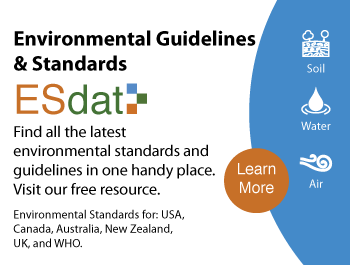The National Water Quality Management Strategy (NWQMS) is the body through which water quality standards are developed in Australia. NWQMS provides an approach to water quality management that is agreed on nationally. It implements aspects such as adapting the guideline to suit local conditions, utilizing current scientific information to influence policy and decision-making, sharing information across jurisdictions, and pursuing a consistent approach towards water quality management. The water quality guidelines focus on providing directions for water managers and industries to streamline their processes to ensure the quality of water suits the intended use.
Under NWQMS, there are different guidelines aimed at water quality managers, farmers and irrigators, local government environment officers, and jurisdictional authorities to use a standardized approach to develop water quality management plans at the local, regional levels. The water quality standards are available to the general public; hence, they can understand the approach applied in local policies and regulations.
The Australian Drinking Water Guidelines (2011) was updated in 2018, and it provides standards that foster supply and management of safe drinking water by assuring its aesthetic value and safety. Effluent Management in Australia governs the discharge of treated wastewater to mitigate its risks to public health and the environment. The Australian and New Zealand Guidelines for Fresh and Marine Water Quality governs how natural and semi-natural water resources are managed through planning, licensing and compliance, approvals, assessment and monitoring. The Guidelines for Groundwater Quality Protection in Australia enforces regulation on groundwater to protect ecosystems. The Guidelines for Managing Risks in Recreational Water mitigates risks to human health and the environmental and social value of waterways. Other guidelines include the Australian Guidelines for Water Recycling, the Rural Land Uses and Water Quality, Guidelines for Sewerage Systems, and the Australian Guidelines for Urban Stormwater Management to promote water quality management at their respective target areas.
Water Quality Standards in Australia

All compiled environmental guidelines and standards are shown on the ESdat website. These are pre-loaded into ESdat Online.
ESdat is a specialist environmental database system; used to validate and import a broad spectrum of Environmental Data and help users analyze and report it.
ESdat Online delivers a highly cost-effective and efficient approach to store your ongoing monitoring environmental data, optionally with a historical data upload provided as a getting started service. ESdat Online is perfect if you want a cloud-based system that collates and reports your ongoing laboratory and field results.
ESdat Server provides the advantages of ESdat Online with the option of adding ESdat Desktop for data experts to upload their historical data, effectively interrogate the raw data being used within the database, and automatically launch and send data to other Desktop Applications such as Surfer, ArcGIS and Excel.
A variety of complementary products are also available to help with related work, such as sample planning and electronic Chain of Custody (LSPECS), offline field data collection or bore logging (pLog), production of bore logs (ESlog), public portals and customized reporting.
References
Commonwealth of Australia (2021). Guidelines for water quality management. Retrieved from https://www.waterquality.gov.au/guidelines
Commonwealth of Australia (2021). Introduction to water quality. Retrieved from https://www.waterquality.gov.au/introduction






